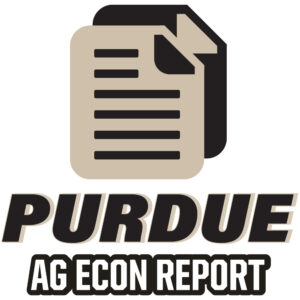Dairy Enthusiasm Edging Lower
December 13, 2014
PAER-2014-15
Nicole Olynk Widmar and Michael Schutz, Animal Sciences
Phenomenal margins in the dairy industry have given way to concerns over falling dairy product prices. Expectations for lower prices are fueled by ample supplies of dairy products, expanding milk production, and a slow-down in dairy exports.
USDA reported a milk to feed ratio of 3.07 for October 2014, the highest milk to feed price ratio since October of 2007. However, with holiday 2014 orders comfortably satisfied, dairy product prices and milk prices are falling. As of December 4th, April 2015 Class III milk futures and options markets revealed a 50% chance of prices be-tween $14.43 and $17.28/cwt (Michigan State University model). Of particular interest on the dairy product side is butter, which slipped more than $1.00/lb. in price from the record-setting level of $3.01 in the first week of October to $1.99/lb. the last week of October. But, butter is not alone in the rapid downward price slide. Cheese, skim milk powder, and dry whey prices have all fallen rapidly as well.
Although prices have fallen they are still significantly higher than the export prices of competitors. “For ex-ample, for the week ending November 1, the U.S. butter price was $1.99 per pound while the Oceania export price ranged from $1.10 to $1.45 per pound for the 2 weeks ending November 7” (USDA). Strong milk production in New Zealand and the EU, in addition to the Russian ban on agricultural imports, has contributed to the relatively low dairy prices abroad.
The significant differential between US dairy prices and foreign export prices has had a significant impact on US dairy trade recently. Exports for the 3rd quarter of 2014 were down 23% from exports in the 3rd quarter of 2013 (on a milk-fat equivalent basis), meanwhile US dairy imports have increased. While the dairy industry has relied on strong exports in recent times to contribute to higher prices, that simply isn’t the case any longer! U.S. dairy producers and foreign competitors are facing changing world prices and potential marketing challenges.
Dairy producers in the US are also navigating a new government program, the 2014 Farm Bill, Margin Protection Program for Dairy (MPP-Dairy). MPP-Dairy is designed to give dairy farmers who choose to participate a compensating benefit payment when a national trigger indicates feed costs are high relative to the price of milk. Farmers can decide each year how much margin cover-age they want for the coming year in terms of the percentage of their milk sales and size of margin. The total amount of milk a farm can cover is determined by their historic milk sales volumes. Catastrophic coverage at the level of $4.00 per cwt can be obtained without any premium above the $100 administrative fee to enroll (which every enrolled farm must pay annually). Dairy farmers can buy higher levels of coverage in $0.50 increments up to $8.00/cwt and at each incremental increase the farm will have to pay higher premiums.
With the introduction of the MPP-Dairy we have had more emphasis than ever on the margin between milk price and feed cost. Note that the final margin for October was $15.62, which is a very strong margin relative to those in recent years.
